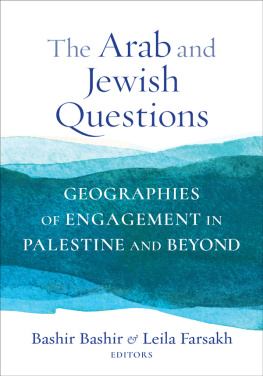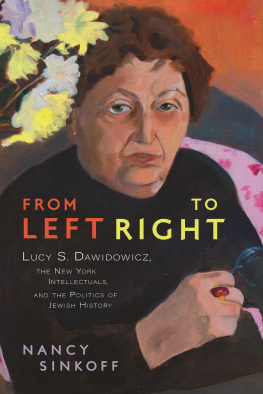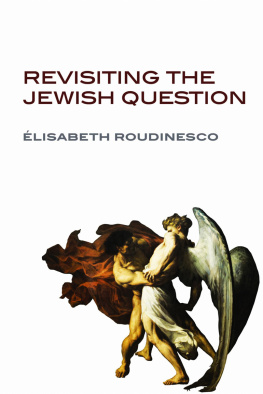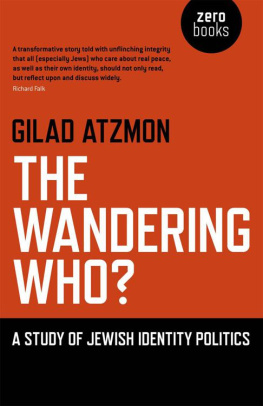Isaiah Berlin, in his Tribute to a Friend, wrote about Talmon, No matter what his theoretical interests were, or the topics on which he was lecturing or writing, his deepest concern was with the Jewish people, its history, its religious, moral and social values, its place among the nations, its future in Israel and the diaspora. These words capture the essence of Talmons political essays presented in Mission and Testimony.
The historian Jacob L.Talmon (19161980) was chosen by an international committee of scholars as one of the twenty major historians of the twentieth century. It declared that his historiography was a convincing apologia for human freedom. Talmon owes his fame to his magnum opus, the trilogy that began with The Origins of Totalitarian Democracy (1952), continued with Political Messianism (1960) and concluded with The Myth of the Nation and the Vision of Revolution (1981). These works have been translated into many languages and have influenced many statesmen and intellectuals.
Talmons essays on the destiny of the Jewish people and the State of Israel in the modern era are collected here under the apposite title he had accorded to one of his articles on modern anti-Semitism: Mission and Testimony. , Profiles in History, depicts the intellectual portraits of the historian Lewis Namier and the physicist and champion of human rights Andrei Sakharov.
David Ohana is a full professor of history at Ben-Gurion University of the Negev. His areas of research include the intellectual and cultural history of modern Europe, Mediterranean studies, and Israeli identity. He studied under Jacob Talmon at the Hebrew University, Jerusalem, and was a fellow at the Sorbonne, Harvard and Berkeley. Among his many books are the trilogy The Nihilist Order (Sussex Academic Press) and The Origins of Israeli Mythology (Cambridge University Press).

Introduction and organization of this volume, copyright David Ohana, 2015; individual chapter copyrights are detailed in the Acknowledgements.
The right of David Ohana to be identified as Editor of this work has been asserted in accordance with the Copyright, Designs and Patents Act 1988.
Published in the Sussex Academic e-Library, 2015.
SUSSEX ACADEMIC PRESS
PO Box 139
Eastbourne BN24 9BP, UK
and simultaneously in the United States of America and Canada
All rights reserved. Except for the quotation of short passages for the purposes of criticism and review, no part of this publication may be reproduced, stored in a retrieval system or transmitted in any form or by any means, electronic, mechanical, photocopying, recording or otherwise, without the prior permission of the publisher.
British Library Cataloguing in Publication Data
A CIP catalogue record for this book is available from the British Library.
Library of Congress Cataloging-in-Publication Data
Jacob L. Talmon : mission and testimony : political essays / foreword by Isaiah Berlin ; edited by David Ohana.
pages cm
Includes bibliographical references and index.
ISBN 978-1-84519-741-4 (pb : alk. paper)
ISBN 978-1-78284-211-8 (e-pub)
ISBN 978-1-78284-212-5 (e-mobi)
ISBN 978-1-78284-213-2 (e-pdf)
1. Talmon, J. L. (Jacob Leib), 19161980. 2. Jewish historiansIsrael. 3. JewsHistoryHistoriography. I. Ohana, David, editor.
DS115.9.T35J33 2015
956.94007202dc23
2015006455
This e-book text has been prepared for electronic viewing. Some features, including tables and figures, might not display as in the print version, due to electronic conversion limitations and/or copyright strictures.
Contents
Index
Acknowledgements
All chapters in the Political Essays section are copyright The Estate of the Late Jacob L. Talmon or are in the Public Domain, except where rights holders are alerted below.
The Ordeal of Sir Lewis Namier The Man, the Historian, the Jew. reprinted from COMMENTARY, March 1962, by permission; copyright by Commentary, Inc.
Mission and Testimony The Universal Significance of Modern Anti-Semitism, from The Unique and the Universal by J. L. Talmon, published by Secker and Walburg. Reprinted by permission of The Random House Group Limited.
The New Anti-Semitism, September 18, 1976. Reprinted by permission of The New Republic.
The publishers apologize for any errors or omissions in the above list, and have made substantive efforts to locate rights holders. The publishers would be grateful to be notified of any corrections that should be incorporated in the next edition or reprint of this book.
A Tribute to My Friend
Isaiah Berlin
I am glad of this opportunity of saying a few words about Jacob Talmon, to whom I was bound by many years of warm friendship. I first met him when he came to see me in Oxford in, I think, 1947, on the suggestion of his then teacher, Professor Harold Laski of the London School of Economics. He wished to discuss movements in eighteenth-century Western thought which, in his opinion, had not been correctly interpreted by most writers on the subject. I realised, before the end of the first hour, that I was listening to an original thinker, a very lively talker, with interesting ideas resting on a solid basis of erudition, that he was imaginative, warm-hearted, passionately anxious to convey his vision of the French thinkers of the Enlightenment and the political consequences of their ideas. I pressed him to stay for longer than he had intended, and he readily agreed. We spent the rest of the day discussing what afterwards became the central theme of his most famous book, Totalitarian Democracy, and since my ideas were tending in the same direction, I found that talking with him was highly stimulating and intellectually delightful.
The sympathetic accord established between us on that first meeting remained undisturbed from then on. The major thrusts of his investigations went into two basic yet parallel directions. His first effort was to trace authoritarian and then totalitarian socialism, initially among parties and factions of eighteenth- and nineteenth-century France and elsewhere in Europe. Inevitably his scholarship turned to the post 1917 Communist rgimes. But above all he bent his mind to the parallels he revealed between the thought of Rousseau, Robespierre, Saint-Just and their conceptions of liberty and fraternity. On the one hand he uncovered the role of revolutionary lites in the social order for which they were fighting, and on the other, the theory and practice of Marx and Marxists in contradistinction to those of liberals and socialists of a more libertarian kind. All this was undoubtedly his major achievement, and earned Talmon a world-wide reputation as a new and important analyst and historian of social and political ideas and movements in the last two centuries. As often happens with path-breaking work, his book was greatly praised and vigorously attacked; as might have been expected, it survived its detractors, and is today regarded as a work of permanent value. In this work and in others, Talmon freely acknowledged his debt to teachers and friends from whom he learnt, but by whom, it seems to me, he was not greatly influenced R. H. Tawney, Lewis Namier, E. H. Carr, Karl Popper with some of whom he remained in touch. He referred relatively seldom to his teachers at the Sorbonne in Paris or in Jerusalem thus he recognized the scholarship of Professor Richard Koebner, but found his approach unsympathetic, a feeling that was, I suspect, reciprocated.
Next page









